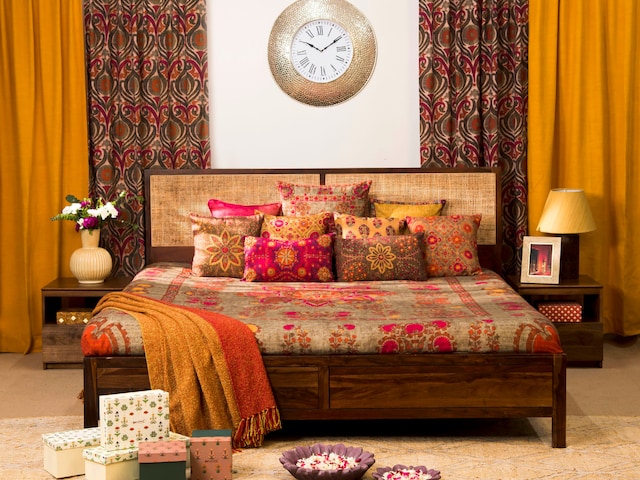
Indian Handicrafts will play an integral role in the future of home décor trends but if employed carefully – understanding the need of the consumers, their preferences, tastes, socio-economic characteristics pertaining to the times
India has a vast repository of artisanal talent, and when combined with upgraded designing, it’ll only add on to the legacy of having a rich cultural heritage.
For most consumers so far, sustainability has been a choice, as a fad to be updated but fortunately, that’s about to change rapidly. Globally, we’re all set to see a major shift in consumption patterns, where the authentic sustainable brands will win the game by offering what’s bound to be irreplaceable: is it also good for the planet?
As per a survey conducted amongst 350000 consumers in the US by Harvard Business Review, sustainability stood out as a clear driver of intent for forming trust in a brand especially amongst the younger consumers. In fact, in India, as per a survey conducted amongst 25,000 consumers between 15 to 25, revealed that young Indians are no longer bounded by the ‘explorations of the Western culture’ and that they believe they can compete on the world stage.
Handicrafts exports on an upward rise
Not just the younger generation, the surge in numbers of exports for Indian handicrafts with over 3000 exhibitors showcasing their collection to the visitors in the 57th IHGF Delhi Fair in Noida, 2024 highlights the upward trend. However, as per the official data, ‘the overall handicrafts exports during the year 2022-23 was Rs 30,019.24 crore (USD 3,728.47 million)’. This portrays a 10% decline in the handicraft’s exports but with the council setting a new target of ‘Teen Guna Tees Tak’ i.e. tripling the exports to around Rs 1 lakh crore by 2030, the sector is all set to see an emergence of new opportunities by employing new set of strategies. The major one is to upgrade the style, rebrand the handicrafts industry and let designing take the centre stage.
The craftsmanship of millennia
Prashant Singh, director, Haath Ka Bana, says, “The history of Indian handicrafts is as old as the civilization. It has been evolving over times with the tools at hand – erupting from wood, textile, stone, and metal. Historically, all the homes in villages used to be decorated with some or the other local artform be it in toran or rangoli or wall murals Bhitti-Chitra (Bihar) / Mandana (Rajasthan). Today, with television and social media embracing the Indian roots, the inclination towards paintings, show pieces especially the biodegradable ones have become increasingly common in North Indian houses. Likewise, Moradabad metal craft items like iron sheet wall art pieces or table decor items are popular in the south as well.”
To attain craft innovation, it’s imperative to inculcate a creative collaboration between designers, entrepreneurs, the government, marketers, artisans etc. One of the key potentials also lies in embracing technology to modernize production processes whilst keeping the core of the craft intact. Further, e-commerce platforms and digital marketplaces provide a global exposure, allowing artisans to access a prospective global customer base and establish direct connections with buyers from around the world.
Singh adds, “With a growing inclination of the Indians towards the crafts, culture and roots and in support of the ‘vocal for local’ call, the Ministry of Textiles had also launched an initiative to set up an e-commerce platform for artisans. The Ministry tied up with India Post to leverage 4,00,000 Common Service Centres (CSCs), set up to offer e-services in areas with limited availability of internet and computers, to allow artisans to go online with their products and become competitive.”
Handicrafts & Sustainability in the Home Decor Trends
To summarize – sustainability, earthy, minimalistic tones and easy on the environment have erupted as one of the major 5 home décor trends. Singh shares interior design trends inspired from handicrafts are:
- EclecticismSelf explanatory but this stands for marrying traditional work with contemporary elements; vibrant handicrafts, vintage touches, rustic, flea market/mela picks, artworks but making it classy, not chaotic.
- Artisan InclinationWith ‘home-grown’ labels & brands enjoying an increased preference, Indian artisanal handicrafts such as traditional handwoven rugs, furniture, etc has found a loyal customer base. Classic terracotta, runners, tablecloths, matkas, sculptures are re-entering the taste palate.
- Indian printsIkat, Kalamkari, bandhani, brocades, block prints are already some of the top preferences for wallpapers, upholstery, tapestry, hangings, decorative pieces. In addition to the pop of colour, tradition and an antique feel & warmth they add, one can also go for a natural cork wallpaper for an eco-friendly alternative.
- Organics & sustainableOn the ecofriendly alternatives, there has been a resurgence in natural surfaces and with the brilliant options for sustainable materials like corn, fibre, and sustainable forms of wood to choose from, Indian handicrafts have become the centre of home décor trends. A skill and art that took birth entirely from the raw materials presented by the nature, this is truly the time for them to enjoy the spotlight. Rugs, curtains, wallpapers, wall hangings that use jute, organic cotton et al don’t only add the earthier rustic vibe but ensures a minimal carbon footprint.
What’s more? a sustainable home is better because no two homes can or will look alike
In nutshell, Indian Handicrafts will play an integral role in the future of home décor trends but if employed carefully – understanding the need of the consumers, their preferences, tastes, socio-economic characteristics pertaining to the times and the changing consumption patterns and styles. India has a vast repository of artisanal talent, and when combined with upgraded designing, it’ll only add on to the legacy of having a rich cultural heritage.
